Abstract
Two studies which examine the effectiveness of spelling remediation procedures are reported. In both studies, an alternating treatment design was employed. In the first study, positive practice overcorrection plus positive reinforcement was compared to positive practice alone and a no-remediation control condition. In the second study, positive practice plus positive reinforcement was compared to a traditional corrective procedure plus positive reinforcement and a traditional procedure when used alone. Results of both studies indicated that the combined positive practice plus positive reinforcement procedure was more efficient and that it was preferred by the children. Following brief training under this combined procedure, all children demonstrated 100% spelling accuracy.
Full text
PDF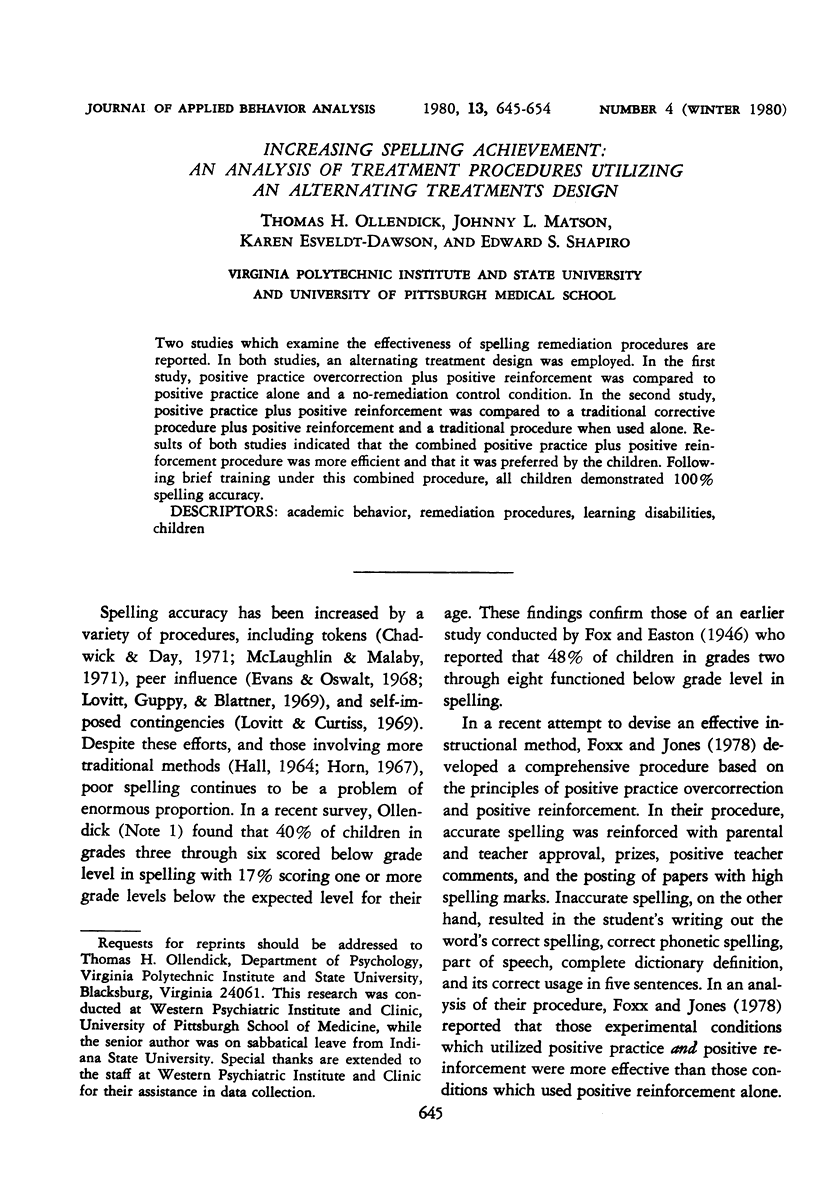
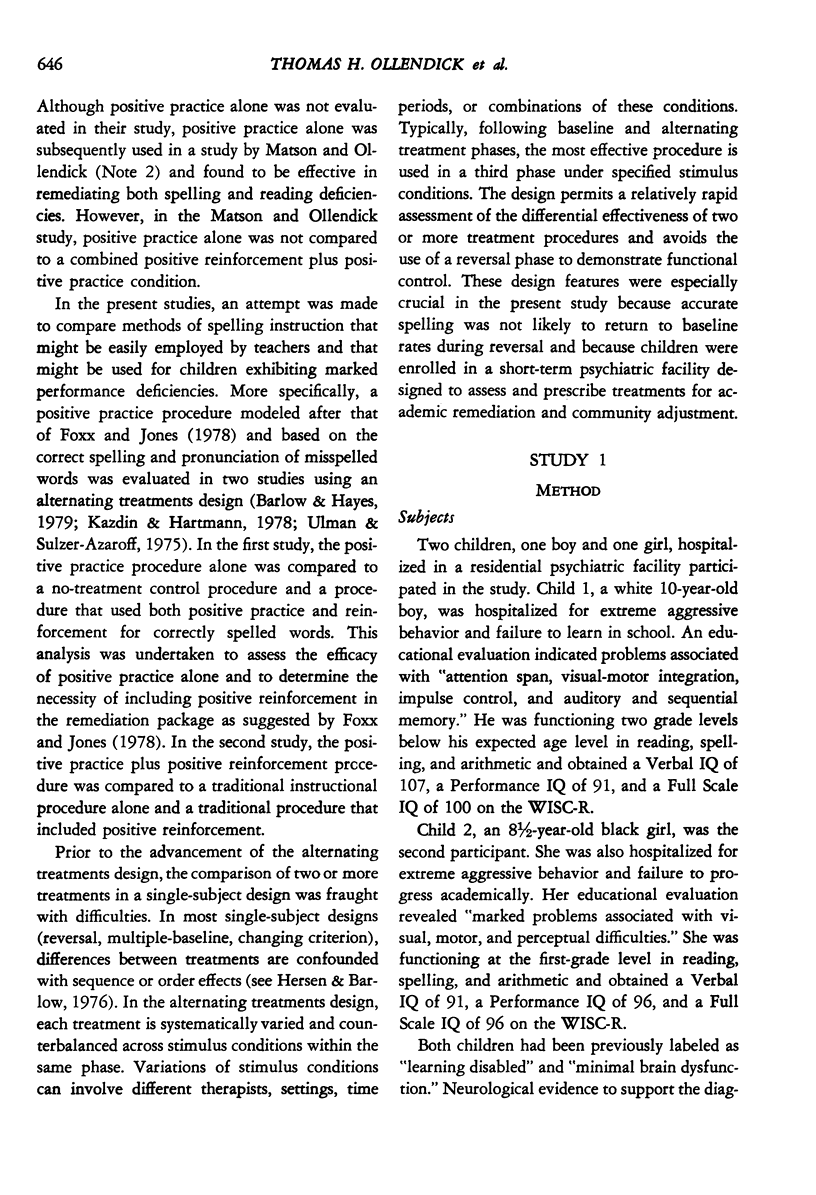
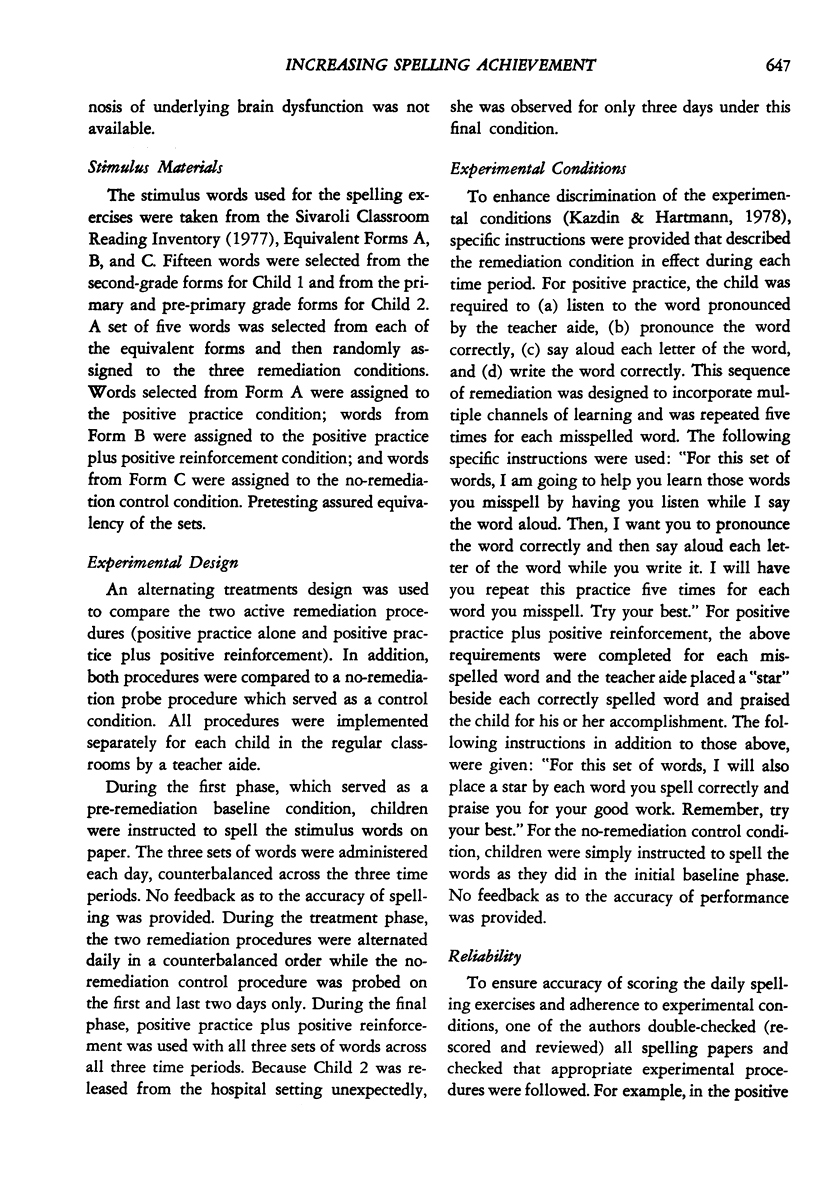
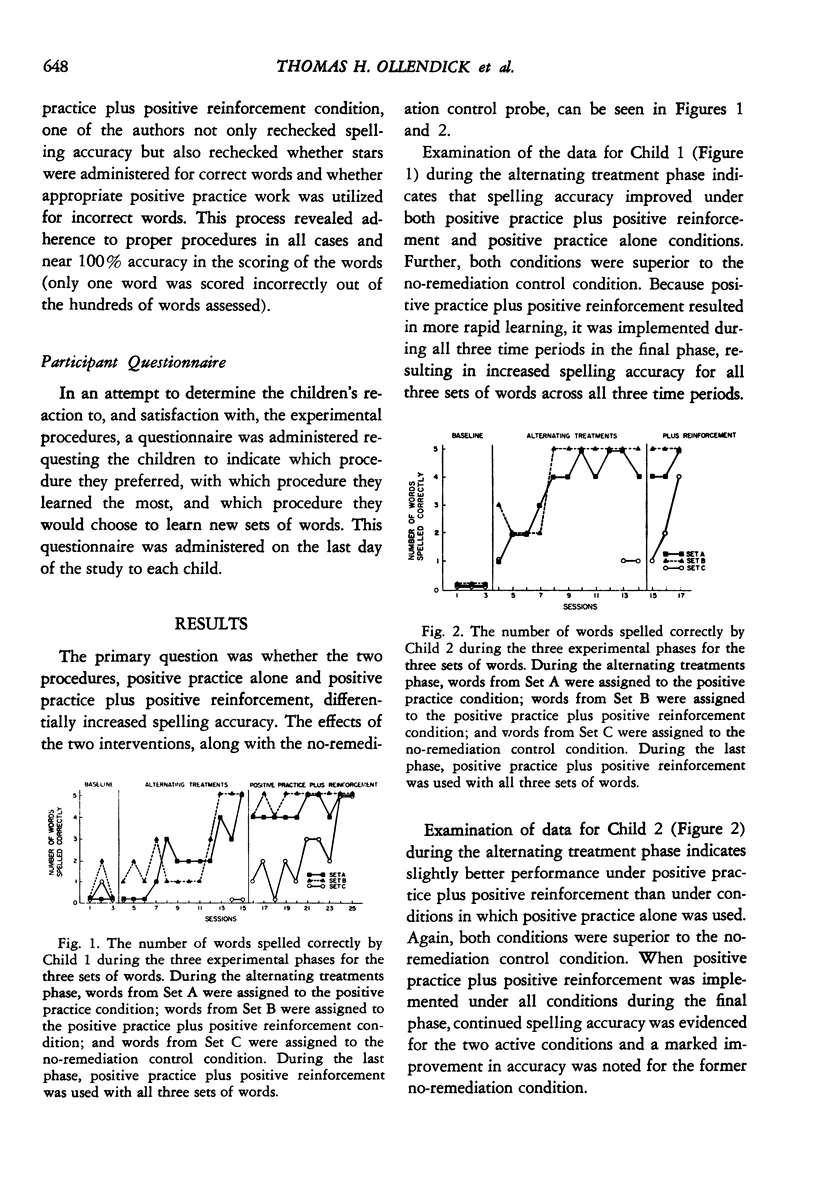
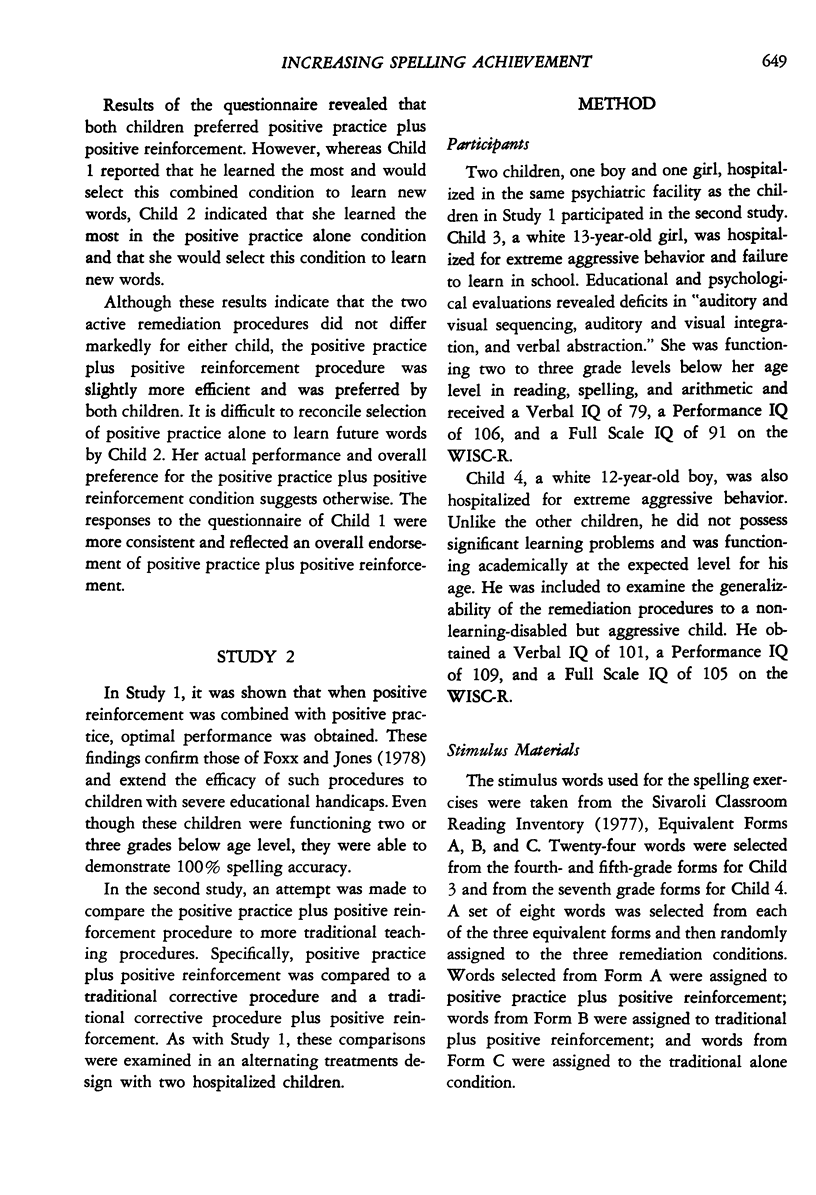
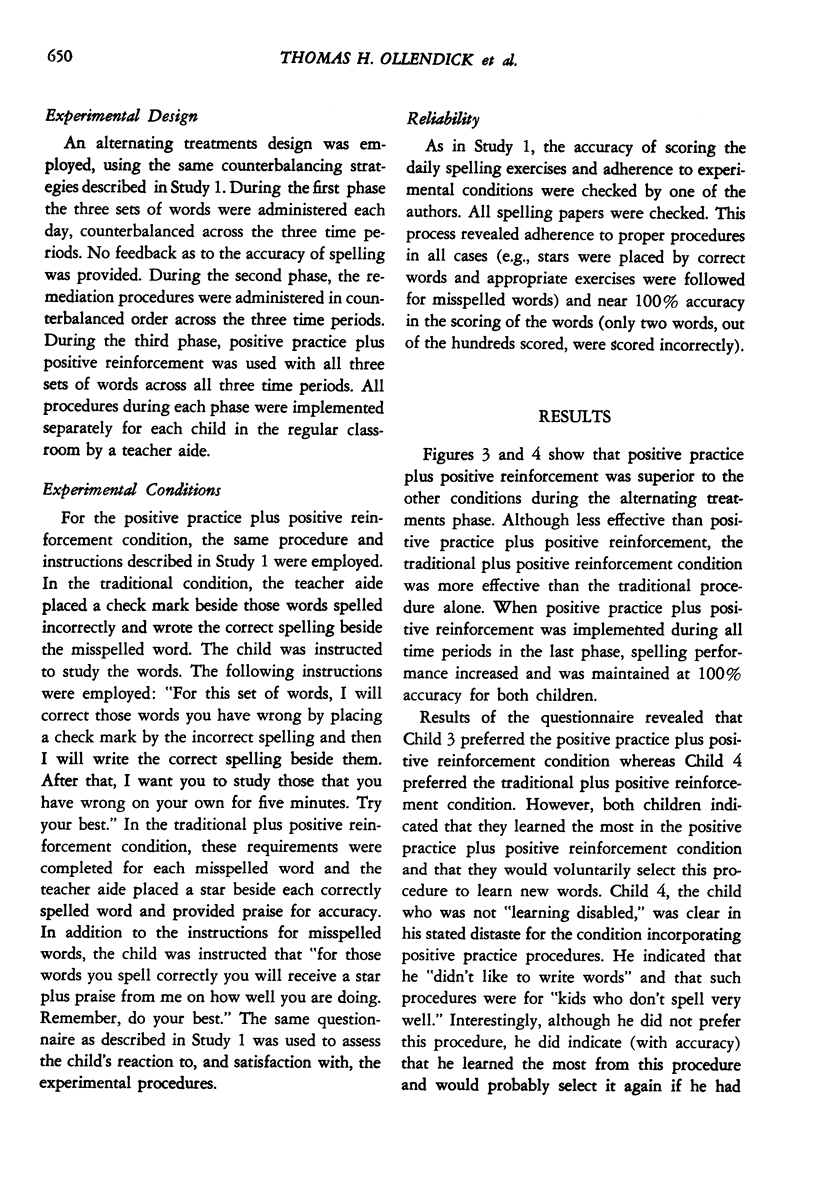
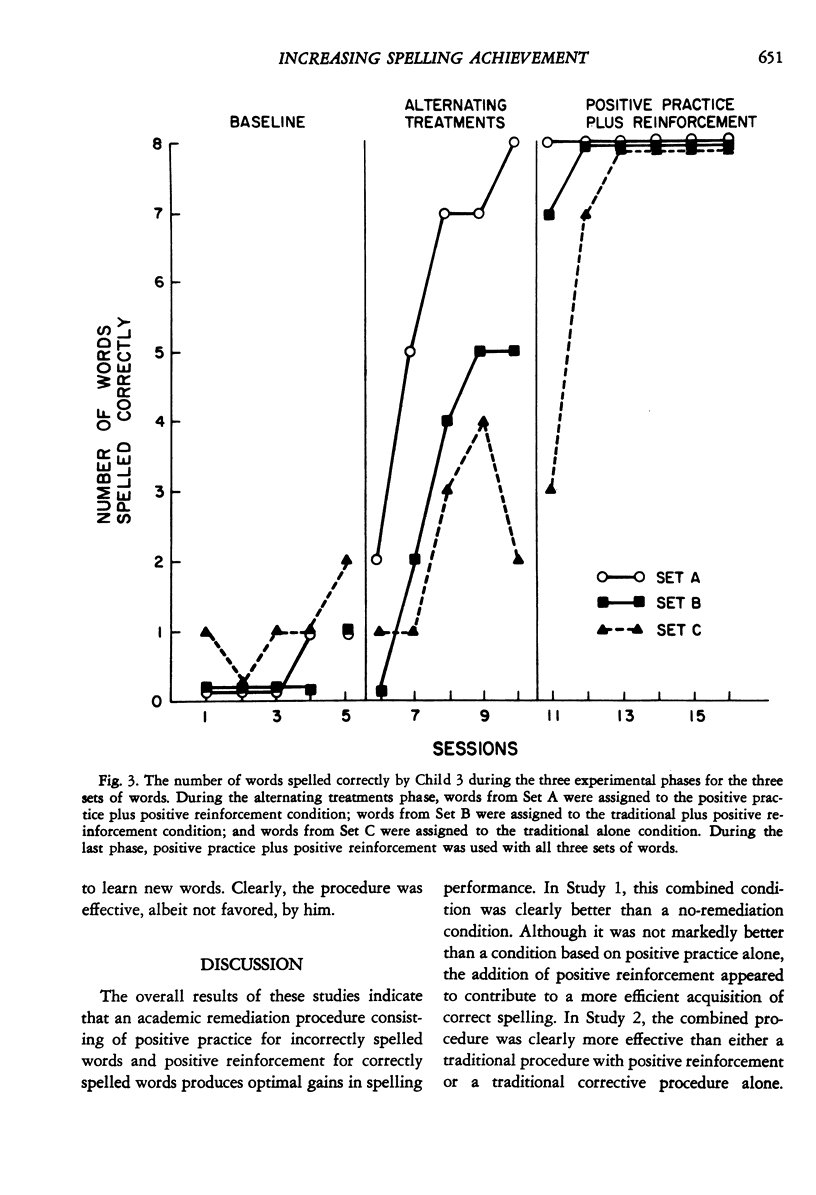
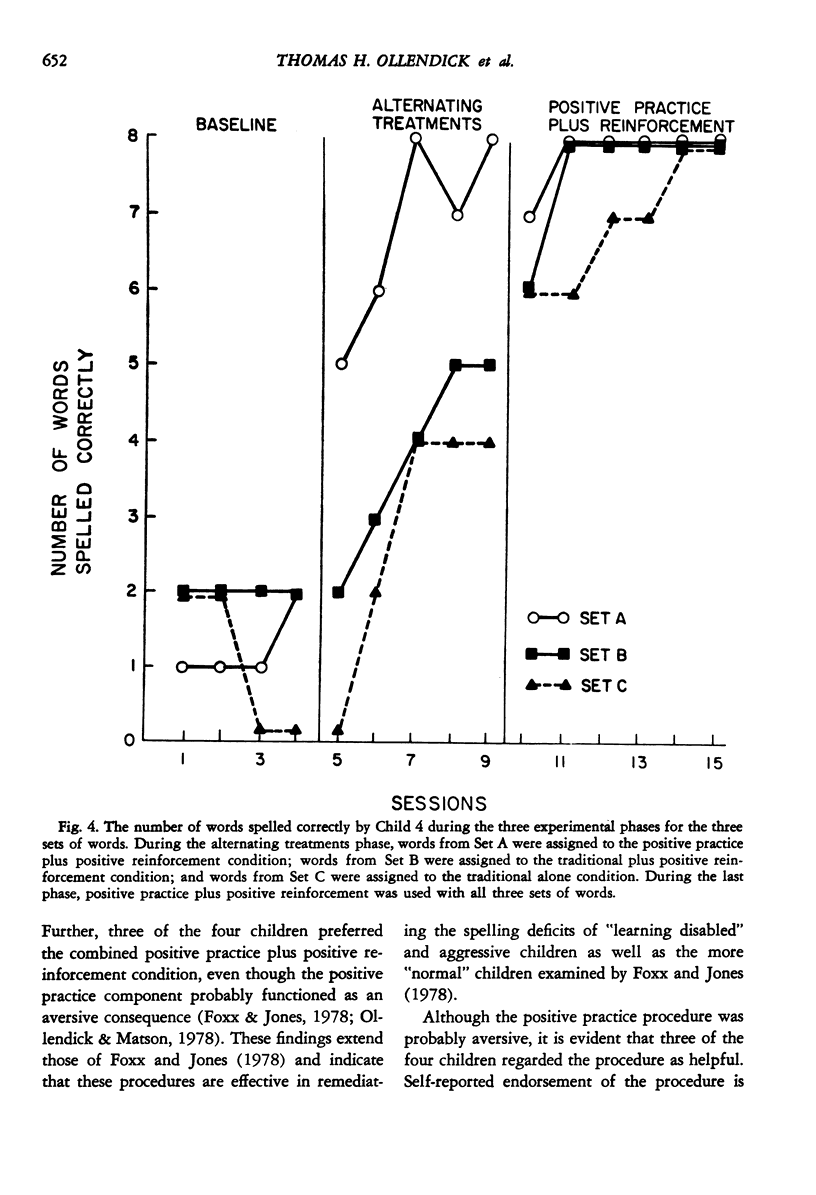
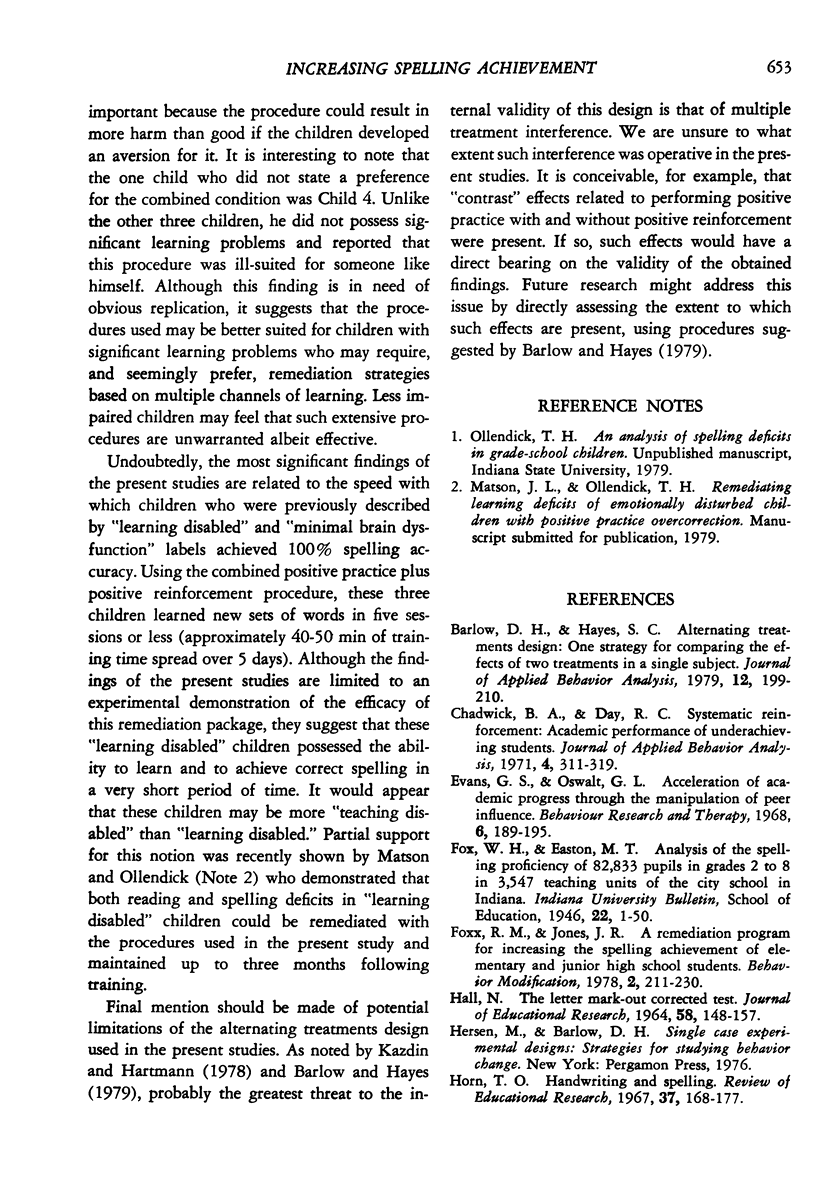
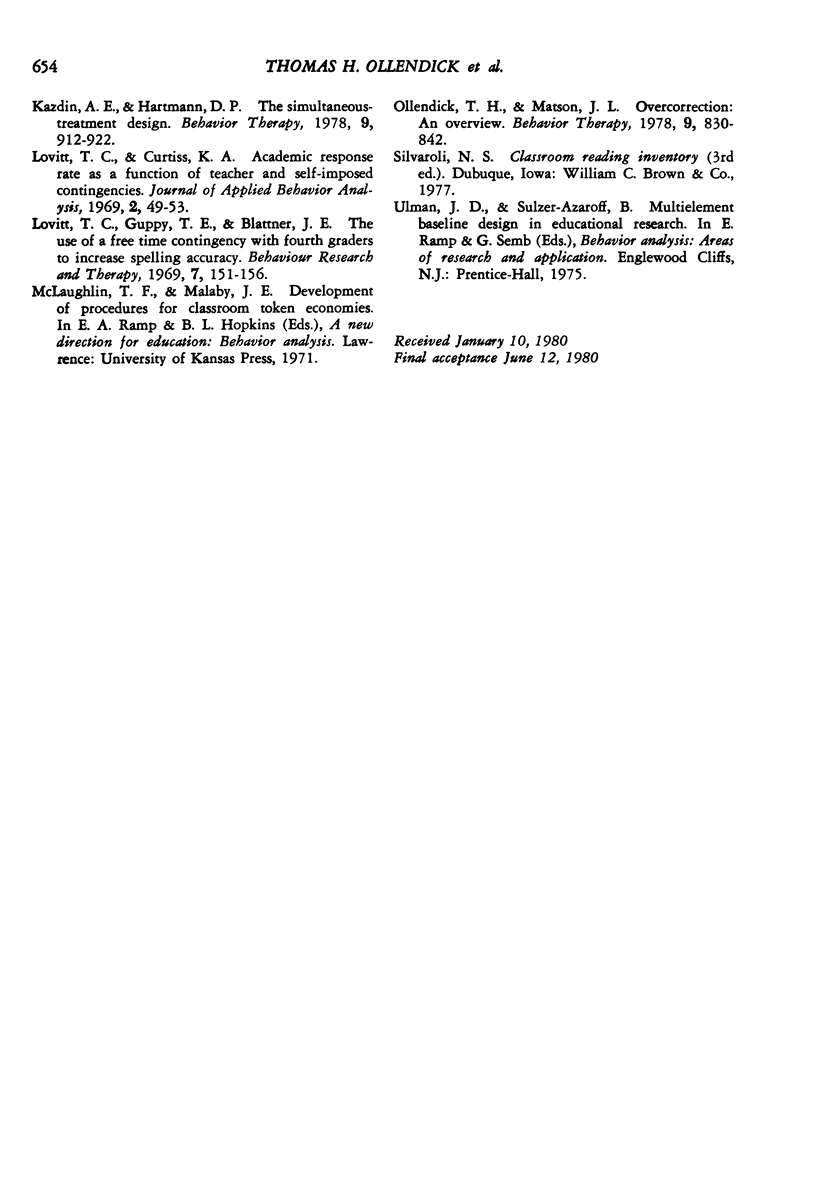
Selected References
These references are in PubMed. This may not be the complete list of references from this article.
- Barlow D. H., Hayes S. C. Alternating treatments design: one strategy for comparing the effects of two treatments in a single subject. J Appl Behav Anal. 1979 Summer;12(2):199–210. doi: 10.1901/jaba.1979.12-199. [DOI] [PMC free article] [PubMed] [Google Scholar]
- Chadwick B. A., Day R. C. Systematic reinforcement: academic performance of underachieving students. J Appl Behav Anal. 1971 Winter;4(4):311–319. doi: 10.1901/jaba.1971.4-311. [DOI] [PMC free article] [PubMed] [Google Scholar]
- Evans G. W., Oswalt G. L. Acceleration of academic progress through the manipulation of peer influence. Behav Res Ther. 1968 May;6(2):189–195. doi: 10.1016/0005-7967(68)90006-5. [DOI] [PubMed] [Google Scholar]
- Lovitt T. C., Curtiss K. A. Academic response rate as a function of teacher- and self-imposed contingencies. J Appl Behav Anal. 1969 Spring;2(1):49–53. doi: 10.1901/jaba.1969.2-49. [DOI] [PMC free article] [PubMed] [Google Scholar]


